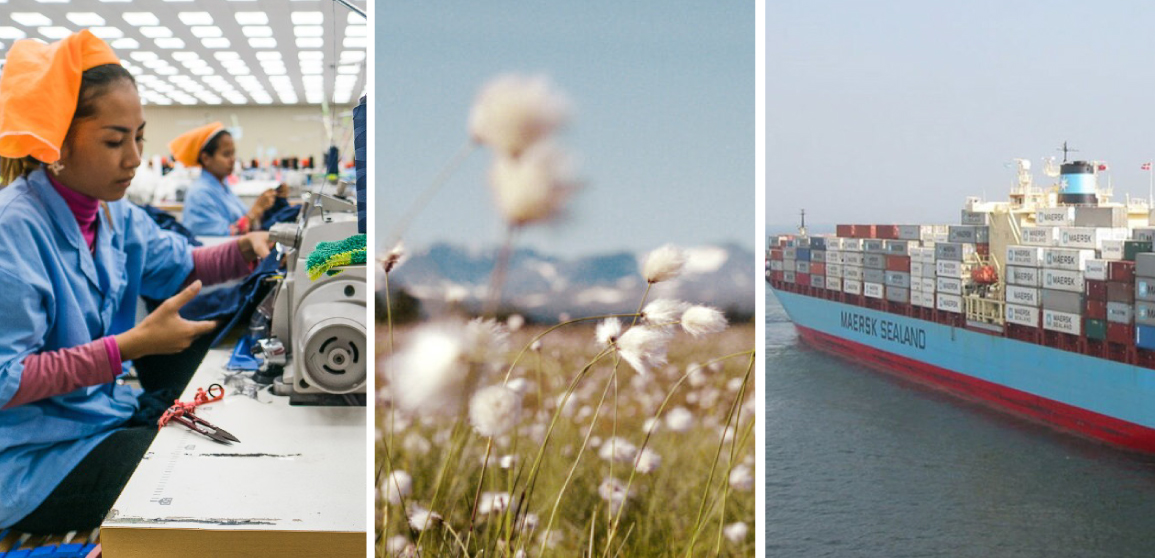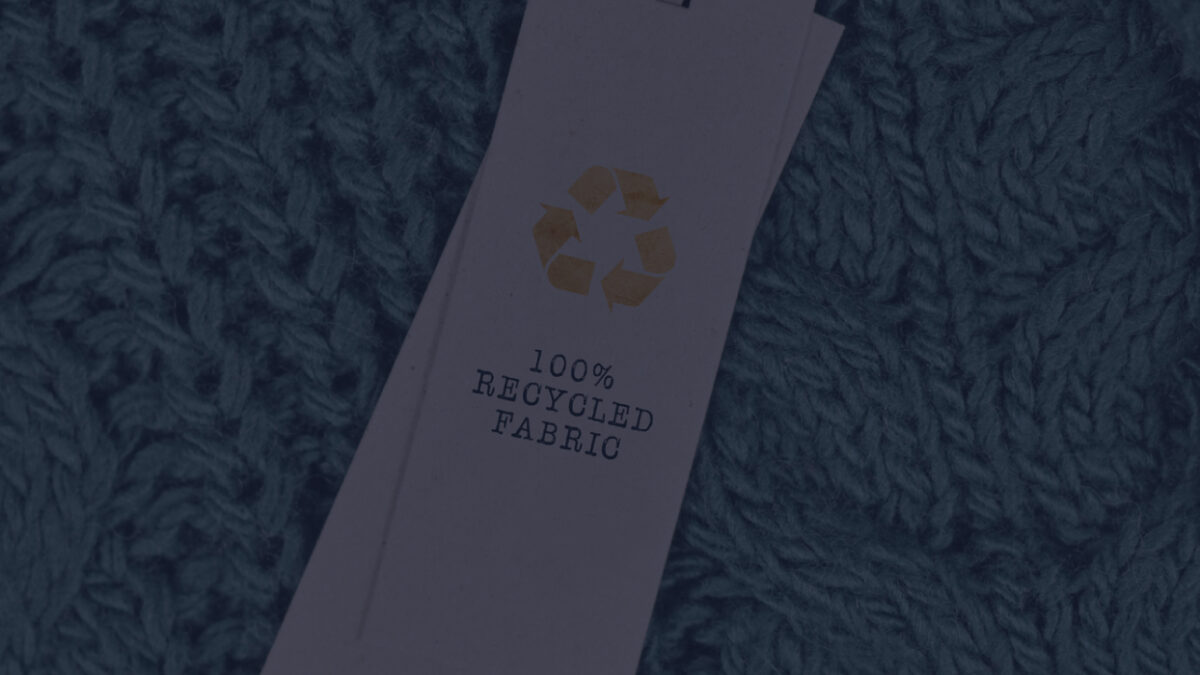
Adaptation of DDMRP for Retail Products on Sale
August 19, 2022
Forecast on the Impending Massive Global Shift in Supply and Demand
September 9, 2022You might have heard about the importance of sustainability in the fashion industry and how many companies are adopting sustainable processes in their supply chain to support climate change and environmental efforts. Sustainability is no longer a buzzword; it’s a vital part of doing business today.
But what does that mean for your business? And how can you ensure that your supply chain is sustainable?
This article will discuss the state of fashion globally and how many companies worldwide are adopting sustainable processes in their supply chain. We’ll also explore how DDMRP can be used in inventory optimization and contribute to a sustainable supply chain for fashion and luxury companies.
Defining Supply Chain in the Fashion Sector
So what is fashion’s supply chain? Simply put, it’s the process that takes materials from suppliers and turns them into finished products sold in stores.
But it’s a little more complicated than that. The supply chain involves a number of different stakeholders, including designers, manufacturers, suppliers, and retailers. And it’s constantly evolving as new technologies and trends emerge.
The challenge for fashion companies is to manage this complex supply chain sustainably. That means using fewer resources and creating less waste. It also means ensuring that workers are treated fairly and that products are made ethically.
Challenges of the Fashion Industry’s Supply Chain
The fashion industry is notorious for its complicated and convoluted supply chains. It’s often difficult to track where garments are made, and sometimes even the designers don’t know where their products are made.
That’s because the fashion industry is built on a model of fast fashion. Garments are made quickly, cheaply, and often with little regard for the environment or workers. As a result, there are a lot of environmental and social costs that come with the fashion industry. According to Fast Company, today’s fashion business consumes 98 million tonnes of oil to produce synthetic fibers, contributes 20% of global water pollution due to hazardous dyes, and emits 1.2 billion tonnes of greenhouse emissions.
These companies may appear caught between a rock and a hard place. How can they maintain an exclusive and high-end inventory while avoiding the environmental and societal consequences of removing surplus products?
The solution may not be as complicated as it appears, but things are starting to change. This is where demand-driven inventory optimization (DDMRP) comes in. A growing number of firms are embracing sustainable processes in their supply chain in an effort to combat climate change and environmental efforts. And DDMRP can play a role in inventory optimization and contribute to a sustainable supply chain for fashion and luxury companies.
Increasing Transparency in Fashion’s Supply Chain
The fashion industry has been plagued by stories of poor labour conditions and child labour. But things are changing. In response to increasing pressure from consumers and advocacy groups, many companies are adopting sustainable processes in their supply chain to support climate change and environmental efforts.
One such process is Demand Driven Material Requirements Planning (DDMRP). DDMRP can be used in inventory optimization and contribute to a sustainable supply chain for fashion and luxury companies. It can help reduce waste, optimize stock, and improve communication between suppliers and retailers.
Transparency is critical in this new age of sustainability. By increasing transparency in the supply chain, companies can ensure that their products are made responsibly, using sustainable materials and practices.

What Is DDMRP?
You might be wondering, what is DDMRP? It’s a relatively new term, but it stands for Demand Driven Material Requirements Planning. And what that means is that the supply chain companies want to optimize their inventory and ensure a sustainable supply chain.
DDMRP considers all inventory variables, from lead times and production capacities to seasonality and demand fluctuations. It’s a more holistic approach that allows companies to react quickly to changing market conditions.
How DDMRP Optimizes Inventory in Fashion’s Supply Chain
You might be wondering how DDMRP can be used to optimize inventory in fashion’s supply chain. Let’s take a look.
DDMRP is all about flexibility and responding to changes in demand. So it’s the perfect solution for companies looking to reduce waste and optimize their stock.
With DDMRP, you can quickly adapt to demand fluctuations and ensure you always have the right products.
Plus, by using DDMRP in your supply chain, you’re helping to support sustainable practices in the fashion industry. This is something that more and more companies are starting to care about, and it’s an important issue that we should all be working together to address.
Benefits of Using DDMRP in a Sustainable Fashion Supply Chain
When it comes to sustainability, companies in the fashion industry face a unique challenge. The production of clothing and textiles is notorious for its negative environmental impact, from harmful dyes and chemicals to the massive amounts of water required.
But with DDMRP, you can optimize your inventory to help reduce waste and ensure that only the necessary items are produced, dyed, and shipped. This can go a long way in helping your company adopt more sustainable practices and support climate change and environmental efforts.
Businesses may more correctly forecast the amount of stock they need to make using a DDMRP model, resulting in less waste and unsold items. Luxury shops (or businesses with underutilized inventory) can enhance cash flow, cut minimum quantity orders, shorten lead times, and improve stock management by implementing DDMRP.
Because DDMRP gives you greater control, the chances of having to throw away $563 million in unsold items are minimal to none.
DDMRP may also assist luxury or high-end firms in creating an even more distinctive offering. For example, a company might limit the amount of inventory they make, resulting in an intended shortage and increased demand for their product.
Inventory optimization is straightforward using DDMRP. However, a fundamental adjustment in organizational culture practices and thinking is required to get behind.
Sustainable Fashion Supply Chain Lessons from H&M
H&M is one of the biggest clothing companies in the world, and they’ve been making a big push towards sustainability in their supply chain. Recently, they’ve teamed up with the International Fashion Federation to develop sustainable fashion guidelines.
So what can we learn from H&M’s efforts? Here are a few key points:
- Minimize waste: H&M has been working on reducing waste in their production process, from using less fabric to developing quick-drying materials.
- Use sustainable materials: H&M is working to increase the use of sustainable materials in their garments, such as organic cotton and recycled polyester.
- Local production: By producing garments closer to where they’ll be sold, H&M is reducing transportation emissions.
- Collaborate with suppliers: H&M is working with their suppliers to help them become more sustainable and efficient.
All of these are significant lessons that other fashion companies can learn from. And if you’re looking for ways to make your supply chain more sustainable, DDMRP can undoubtedly help.

Conclusion
As the fashion industry grows, it places an even greater demand on the environment. The adverse effects of the fast fashion industry are well documented, but change is happening. More and more fashion companies are adopting sustainable processes in their supply chain to support climate change and environmental efforts. Inventory optimization can play a role in a sustainable fashion supply chain.
DDMRP can help reduce waste and better manage inventory by anticipating changes in demand. This can help reduce the need for excess inventory, leading to less waste and fewer negative environmental impacts. We hope this article has provided insights into how DDMRP can help fashion companies become more sustainable.
Interested in knowing how Patrick Rigoni can step up the game of your supply chain? Contact us today and get a free consultation.
Patrick Rigoni offers in-depth DDMRP courses; if you are interested to know more about DDMRP for the supply chain for your company, here is the link to the NEW DDMRP Page.




